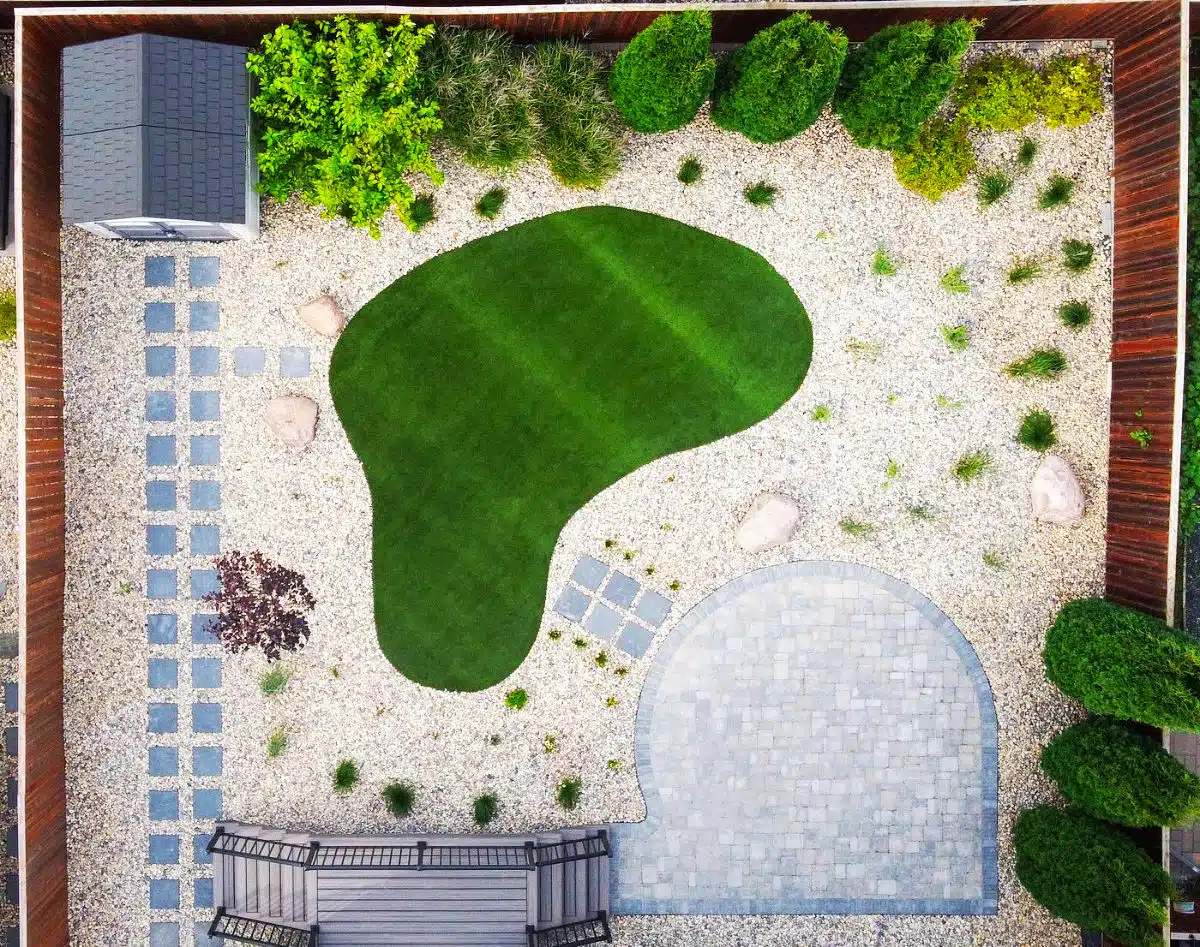Welcome to the world of designing landscaping for small spaces. In this article, we will explore the art of creating beautiful and functional landscapes even in limited areas. Small spaces offer unique opportunities and challenges that require thoughtful planning and strategic design techniques. Whether you have a tiny backyard, a rooftop garden, or a compact balcony, this article will provide you with valuable insights and practical tips to make the most out of your small outdoor space. So let’s dive in and transform your compact area into a stunning oasis!
Assessing the Space
Analyzing the Size and Shape
Before diving into the design process, it’s essential to assess the size and shape of your small space. Measure the dimensions accurately and take note of any irregularities or obstacles such as walls, fences, or utility structures. Understanding the limitations and possibilities of your space will help you make informed decisions during the design phase.
Considering Light and Shade
The amount of sunlight your small space receives is a crucial factor to consider when choosing plants and designing the layout. Observe how sunlight moves across your space throughout the day and identify areas with full sun, partial shade, or full shade. This information will guide your plant selection and placement to ensure their optimal growth and health.
Choosing the Right Elements
Selecting Suitable Plants
When it comes to small space landscaping, selecting the right plants is key. Opt for compact and dwarf varieties that won’t overpower the space. Consider plants with interesting foliage, vibrant blooms, or unique textures to add visual appeal. Additionally, choose plants that thrive in the available light conditions and are well-suited for your climate zone.
Incorporating Containers and Vertical Gardens
Containers and vertical gardens are excellent space-saving solutions for small landscapes. Utilize pots, hanging baskets, or raised beds to grow plants vertically and make use of vertical wall spaces. This not only adds greenery but also creates visual interest and maximizes the available space. Remember to choose containers that complement the overall design aesthetic and ensure proper drainage for healthy plant growth.
Adding Functional Features
Small spaces can be highly functional if you incorporate the right elements. Consider adding features like a cozy seating area, a compact water feature, or a vertical herb garden for culinary delights. Think creatively and prioritize functionality based on your needs and preferences. Remember that each element should serve a purpose while harmonizing with the overall design. Need some Ideas? Check out our article on landscaping ideas for backyards.
Maximizing Space with Design Techniques
Creating Layers and Levels
To create an illusion of depth and maximize space, incorporate layers and levels into your design. Utilize different heights by placing tall plants or trellises at the back, followed by medium-sized plants, and finally, groundcovers or low-growing plants in the foreground. This layering technique adds visual interest and makes the space appear larger than it actually is.
Using Illusion and Perspective
Incorporating design techniques that create an illusion of space can work wonders in small landscapes. Consider using diagonal lines or pathways that lead the eye toward a focal point, such as a statue or a visually appealing feature. Mirrors strategically placed can also reflect light and create an impression of openness. By playing with perspective, you can transform your small space into a visually captivating and seemingly larger landscape.
Maintaining and Caring for the Landscape
Watering and Irrigation
Proper watering and irrigation are essential for the health and vitality of your small space landscape. Determine the watering needs of your chosen plants and create a watering schedule accordingly. Consider installing a drip irrigation system to ensure efficient water distribution and minimize water waste. Regularly monitor the moisture levels and adjust watering as needed to prevent under or overwatering.
Pruning and Trimming
Regular pruning and trimming help maintain the shape and size of your plants, preventing them from overpowering the space. Trim back overgrown branches, dead foliage, or spent blooms to keep your landscape neat and well-groomed. Additionally, prune plants strategically to enhance their natural form and encourage healthy growth.
Designing landscaping for small spaces requires creativity, strategic planning, and attention to detail. By assessing the space, choosing the right elements, utilizing design techniques, and implementing proper maintenance, you can transform even the tiniest outdoor areas into enchanting and functional landscapes. Embrace the uniqueness of your small space and let your creativity flourish. Enjoy the process and the rewards of your beautifully designed oasis!
